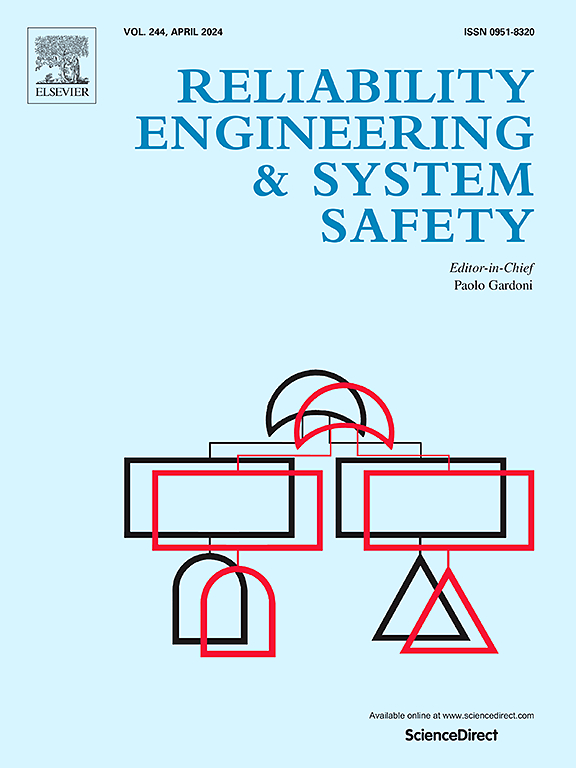Prioritized fault detection and diagnosis in chemical industry using production loss-guided cost matrix with self-attention mechanism
IF 9.4
1区 工程技术
Q1 ENGINEERING, INDUSTRIAL
引用次数: 0
Abstract
Product loss is an ongoing critical challenge in industrial processes, particularly in chemical systems where undetected faults can have major economic consequences. Traditional fault detection models, designed primarily for mechanical systems, often prioritize accuracy and system performance but fail to account for the economic impact of faults in chemical systems. To address this gap, this study proposed a production loss-guided cost matrix self-attention, long short-term memory (PLSA-LSTM) model, which integrates a production loss-guided cost matrix to align fault classification with operational priorities. The cost matrix assigns higher penalties to faults with major production losses, guiding the model to focus on economically critical faults. The self-attention mechanism emphasizes critical input features and Bayesian optimization fine-tunes hyperparameters to balance accuracy and production loss minimization. The PLSA-LSTM model was applied to a glycerin purification process and achieved a fault detection accuracy of 95.31% while reducing production loss by 99.07% per fault occurrence, notably outperforming traditional methods. Compared to the traditional self-attention model, the PLSA-LSTM model reduced unprevented production loss from 94.97 kg/h to 0.87 kg/h while maintaining competitive classification performance. The results demonstrated the ability of the model to handle complex fault scenarios, prioritize faults with high economic impact, and minimize production losses, making it highly applicable to fault-prone industrial environments.
基于自关注机制的生产损失导向成本矩阵的化工故障优先检测与诊断
在工业过程中,产品损失是一个持续的关键挑战,特别是在化学系统中,未被发现的故障可能会造成重大的经济后果。传统的故障检测模型主要是为机械系统设计的,通常优先考虑准确性和系统性能,但无法考虑化学系统故障的经济影响。为了解决这一问题,本研究提出了一种生产损失导向成本矩阵自关注长短期记忆(PLSA-LSTM)模型,该模型集成了生产损失导向成本矩阵,使故障分类与操作优先级保持一致。成本矩阵对造成重大生产损失的故障给予更高的惩罚,引导模型专注于经济上至关重要的故障。自关注机制强调关键输入特征,贝叶斯优化微调超参数以平衡精度和生产损失最小化。将PLSA-LSTM模型应用于甘油纯化过程中,故障检测准确率达到95.31%,每次故障发生的产量损失降低99.07%,明显优于传统方法。与传统的自关注模型相比,PLSA-LSTM模型将不可预防的产量损失从94.97 kg/h降低到0.87 kg/h,同时保持了具有竞争力的分类性能。结果表明,该模型能够处理复杂的故障场景,优先处理具有高经济影响的故障,并最大限度地减少生产损失,使其高度适用于故障多发的工业环境。
本文章由计算机程序翻译,如有差异,请以英文原文为准。
求助全文
约1分钟内获得全文
求助全文
来源期刊

Reliability Engineering & System Safety
管理科学-工程:工业
CiteScore
15.20
自引率
39.50%
发文量
621
审稿时长
67 days
期刊介绍:
Elsevier publishes Reliability Engineering & System Safety in association with the European Safety and Reliability Association and the Safety Engineering and Risk Analysis Division. The international journal is devoted to developing and applying methods to enhance the safety and reliability of complex technological systems, like nuclear power plants, chemical plants, hazardous waste facilities, space systems, offshore and maritime systems, transportation systems, constructed infrastructure, and manufacturing plants. The journal normally publishes only articles that involve the analysis of substantive problems related to the reliability of complex systems or present techniques and/or theoretical results that have a discernable relationship to the solution of such problems. An important aim is to balance academic material and practical applications.
 求助内容:
求助内容: 应助结果提醒方式:
应助结果提醒方式:


